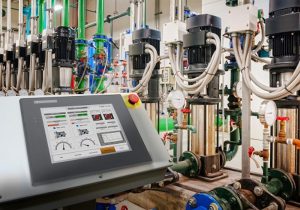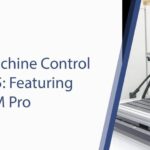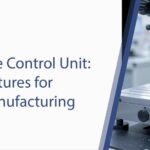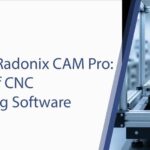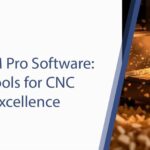Advantages of Industrial Automation: A Practical Guide for Modern Manufacturers
Industrial automation is the engine behind today’s most efficient factories. By combining software, sensors, motion control, and robust controllers, manufacturers automate repetitive tasks, stabilize quality, and scale output with fewer interruptions. This guide expands on the core advantages of industrial automation, clarifies where the value comes from, and outlines a realistic path to adoption for plants of any size.
What Is Industrial Automation—and What It Is Not
Industrial automation goes beyond mechanization. Mechanization uses tools to assist a human; automation embeds decision logic, feedback, and actuation so the process runs with minimal human intervention. At its core are:
- Sensing and Instrumentation: pressure, temperature, flow, position, vibration, power.
- Control and Logic: PLCs, PACs, motion controllers, CNCs.
- Supervision and Data: SCADA/HMI systems, historians, and MES/ERP links.
- Actuation and Robotics: motors, drives, valves, robots, cobots.
These elements appear across sectors—water and wastewater, power, oil & gas, chemicals, food & beverage, automotive, aerospace, and discrete manufacturing.
Why Automation Matters Now
Shorter lead times, skilled‑labor gaps, sustainability goals, and tighter tolerances force plants to do more with less. Automation closes the gap by stabilizing processes, capturing data at the source, and enabling continuous improvement with measurable KPIs.
Core Benefits of Industrial Automation
1) Consistent Quality at Scale
Automated sequences repeat identically every cycle. With closed‑loop feedback (sensors + control logic), systems correct deviations on the fly, delivering repeatability and traceability that are hard to match with manual steps.
2) Higher Throughput and Shorter Cycles
Optimized motion profiles, coordinated axes, and parallel operations (e.g., loading while machining) compress cycle time. Automated changeovers and recipe management reduce downtime between variants.
3) Real‑Time Quality Control
Inline gauging, vision systems, and probing catch defects early. Automated alarms and interlocks stop a process before bad parts proliferate.
4) Less Waste, Better Yield
Tighter process control lowers scrap, rework, and energy per good part. Automated dosing and precise motion reduce overfill, overcut, and off‑spec output.
5) Safer Workplaces
Robots and guarded cells remove operators from heat, chemicals, repetitive motions, and heavy lifts. Standardized sequences reduce human error and near‑miss events.
6) Business System Integration
Linking automation to MES/ERP enables accurate order tracking, electronic batch records, and closed‑loop scheduling—turning production data into actionable decisions for finance, HR, and supply chain.
Quick wins to target: automate data capture for downtime causes, add inline measurement to your most variable station, and standardize changeovers with guided HMI steps.
The Role of Sensors: Eyes and Ears of the Plant
No automation without sensing. Instrumentation quality determines how fast and how precisely a controller can steer the process. Common building blocks include:
- Process sensors: pressure, differential pressure, flow, temperature, level.
- Discrete sensors: proximity, photoelectric, limit, and safety devices.
- Motion feedback: encoders, resolvers, load cells, and vibration sensors for predictive maintenance.
Selecting the right range, accuracy, response time, and protection (IP/NEMA) ensures robust performance in harsh environments.
PLCs vs. Legacy Relays: Why Logic Matters
For decades, relay logic or pneumatics handled simple sequences. Modern plants rely on PLCs (Programmable Logic Controllers) because they offer:
- Compact, modular I/O with quick diagnostics.
- Ladder/structured‑text programming and online edits.
- Networked communication (Ethernet/IP, Profinet, Modbus TCP).
- High reliability, EMI noise immunity, and environmental resilience.
- Easy expansion and remote access for maintenance.
PLCs remain the backbone of automation projects and a natural companion to CNCs, robots, and motion controllers.
SCADA, HMI, and Data: From Visibility to Insight
SCADA/HMI systems visualize live data, trend performance, and centralize alarms. When paired with historians and light MES, they unlock:
- OEE tracking (Availability, Performance, Quality).
- Recipe/part management with revision control.
- Electronic work instructions and guided setups.
- Audit trails and genealogy for regulated industries.
Financial Impact: Cost, ROI, and Scaling
Automation is an investment—but returns compound when scoped well:
- Direct savings: reduced scrap, lower rework, fewer manual touches, optimized energy.
- Capacity gains: more parts per shift without additional headcount.
- Quality premiums: consistent conformance and customer confidence.
A phased roadmap (pilot → standardize → scale) spreads capital while building internal capability.
Implementation Roadmap (Practical and Low‑Risk)
- Define the bottleneck: choose one line/cell with clear KPIs (cycle time, yield, changeover loss).
- Instrument first: add sensors where variation originates; confirm data quality.
- Introduce control: deploy a PLC/CNC/drive upgrade with safety and recipe management.
- Visualize: add HMI/SCADA screens, alarms, and a simple dashboard with OEE.
- Standardize: lock in programs, nameplates, and SOPs; train operators and maintenance.
- Scale out: replicate the proven package to similar lines; integrate with MES/ERP when ready.
Industrial Robots and Cobots: Where They Fit
Robots excel at repetitive, precise, or hazardous tasks: part loading/unloading, palletizing, tending CNCs, dispensing, or inspection. Cobots add flexibility with quick redeployment and safe, guided operation—ideal for high‑mix, low‑volume cells.
Cybersecurity & Reliability Considerations
As plants connect more devices, protect operations by:
- Segmenting OT networks from IT; using VPNs for remote access.
- Applying vendor patches during planned windows.
- Backing up PLC/CNC programs and keeping a golden image.
- Enforcing role‑based access and change control.
Where Automation Delivers Fastest Payback (Examples)
- Food & Beverage: automated filling/labeling with inline checks reduces giveaway and recalls.
- Automotive & CNC machining: probing, tool monitoring, and robot tending boost spindle utilization.
- Water/Wastewater: SCADA‑based pump control stabilizes energy use and prevents overflows.
- Chemicals: closed‑loop temperature/flow control stabilizes reaction quality and yield.
